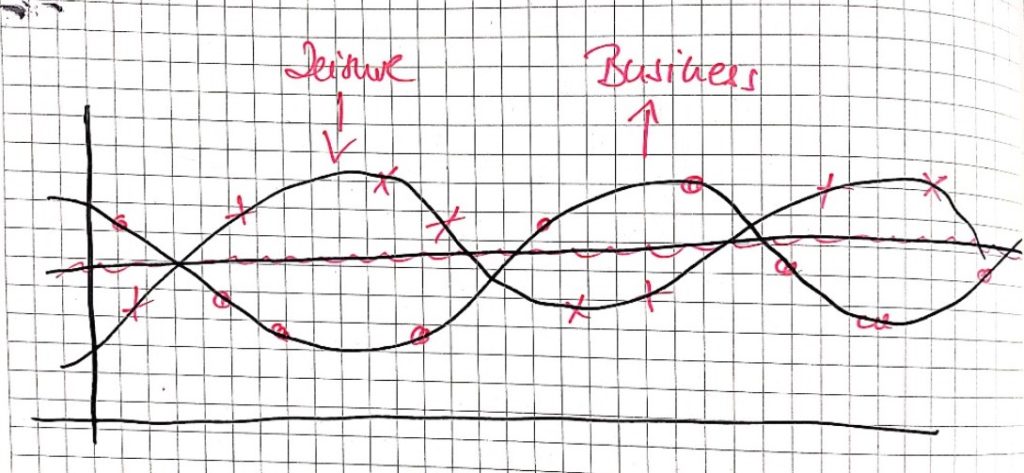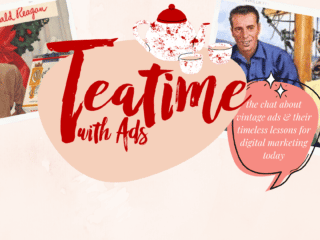Personas, ICA, Target Groups: What they mean for your startup success
Target group, persona, ICA (Ideal Customer Avatar) – what do I need in digital marketing, when and for what? Are they the same – or how do they differ? What should I know as an owner or marketing manager? Do I need all three – or individual ones on a case-by-case basis? And then what do I do with it? What happens if I don’t use Personas & Co.
To start: A quick overview of the terms target group/persona/ICA
Target group definition – this comes primarily from a business perspective. It is ultimately about where money can be made. This information would have its place in the business plan, for example. It lays the fundamental premise. No solid target groups with (payment) potential, no business.
Persona: Originally a methodology from B2B marketing. This concept mostly makes sense to design well-made websites in detail – e.g. to define the customer journey. This element belongs e.g. in a good marketing and branding strategy or also communication strategy (where exactly is a little bit a matter of definition).
ICA = Ideal Customer Avatar: This methodology of approaching one’s target group serves a communicative purpose above all. You mentally focus on a specific psychological profile and create content with that in mind.
In which order are the target group/persona/ICA concepts applied?
So if you start off clean in terms of craftsmanship, you would get started here:
Step 1: Analyze the target group and define it
In this step, we want to find answers to the following questions:
- who out there wants our product?
- are there enough of these people?
- do these people already know that this is what they want? (the difficulty level increases enormously, if not, conversion costs money 😉)
- what is the product worth to these people – and do they have the money?
- are they responsive – and if so, where and how?
Or marketing-wise as a checklist:
- Is the segment big enough?
- Identifiable / Accessible?
- Need for the offer?
- Willingness and ability to pay?
- Responsive….?
As can already be guessed, two things are required in this phase of work:
- valid information – don’t stay with assumptions, but use the possibilities of market research secondary (e.g. Google search) and primary (e.g. focus groups) to get facts, correlations and levers
- and a little clever out-of-the-box thinking – perhaps the affluent target group is not so obvious?
It may be that the spectrum of the target group to be tested is first opened up in an intentional manner (“diverging”), and then narrowed down again on the basis of the findings (so-called “converging”).
There may be one main target group or two or three. Stay open about it.
For the marketing plan, in cases with multiple target audiences, you should at least time-balance – or adjust the budget accordingly (3 target audiences can theoretically already be addressed in parallel, but will also require 3 teams, 3 sets of communications, etc.).
To give you a sense of how much leverage there is in this, here are three examples:
(all of them are purposefully quoting stories from a good while back – for which there is a good reason. Which one that is, you will find out below. 🙂
Example 1: The German car brand that had an unsuspected target group
I was asked to prepare a pitch for a car brand that is very popular internationally among a lifestyle-savvy male target group. We thought about where and how we could get a grip on this very cliché-laden topic.
For classification: marketing along the cliché can work, but in most cases, it does not grab the heart of the matter. So we went knee-deep into the swamp and waded through the market research and sales numbers. A few days later, I sat shaking my head over the results: The sub-target group that consisted of true fans bought too many of them….
I mean:
How much cars could you possibly drive per day?
Something didn’t make sense.
We looked more closely, tossed and turned, and had conversations…. until we reached the point: This over-purchase of automobiles made sense…. as soon as it becomes clear that the umpteenth of these companions was typically bought for the girlfriend/mistress and given away.
Bam!
So, obviously, within the target group, the money was there, the need was there – but the target group / the decision maker, the main ‘influencer’ – that was actually someone other than the person writing the check.
Of course, this is a completely different approach to communication. From a communication standpoint, you would miss the mark completely if you missed this point.
Example 2: The tire brand forfeiting sales due to outdated beliefs regarding the target group
There was/is a tire brand – which, at least according to rumour, is a male-heavy theme, led by men at the time.
We were asked to take a closer look at where we can specifically increase sales.
We looked at the company’s data, plus the available market figures – and in that case, we treated ourselves to a so-called store check (such fun! ever did one?).
After analyzing everything, a very simple, but at the time still very disruptive, insight emerged:
The decision whether or not to spend the money on the more pricey set of tires, will in 70% of the cases be taken by the female head of the family.
Can we quickly reflect on whether the customary pinup calendars with naked girls would match this target group? 😉
For context: The right tires are de facto an essential contribution to driving safety and can make a significant difference in accidents in terms of braking distance. This fact and its proof already existed; these features were relevant to the target group of women – it was just a matter of using this.
At the time, this customer preferred to stick to his old beliefs – and forego the additional sales that were probably easy to come by (after all, the competition did nothing for it).
What I’m getting at:
A good analysis and such an insight – those can be worth real money. Lots of it.
Suddenly you have a completely different, much more grippy lever.
This is what I call effort, time and money well spent.
Notice:
The more agnostic, i.e. unbiased, our approach to target group analysis, the better our chances of unearthing real sales opportunities.
Example 3: The airport drugstores with the undetected seasonal target groups
I would like to share this example to make it clear that there can be other types of target groups than demographically defined ones.
For example, an obvious case can arise in international marketing, where analyzed at the country or regional level.
But another issue can be seasonality vs different target groups.
To understand the added value here, it’s important to be clear again what we’re about: figuring out where to find enough willing people with need and money and then where and how best to approach them.
The case involved a chain of drugstores at airports and the questions of whether and how to place certain promo focal points to increase sales.
At first glance, everything looked nice & clean, with a fairly stable sales curve throughout the year and a bit of a peak at Christmas (not very amazing). Hm. There was little creative state to be made with it. Here, too, it was only the realization at a second glance…
Shouldn’t the business and vacation people have different timing, preferences, and budgets?
Ha!
Suddenly, the axis-even heel-short disintegrated into two, which visually balanced each other out cumulatively:
The Business vs the Leisure target group.
Suddenly we had clear seasonal focuses, focuses in preferred merchandise groups and budgets – recommending promotion focuses was ‘just’ a matter of logic at that point – and could be handed off to the creative team well briefed from then on.
Who could then, in turn, think about the address on a more emotional/human level.
So these three examples on the subject of target audiences and their analysis give you a sense of the potential.
The (often invisible) difference between success and mediocrity
As you can see,
You can see from this that, especially in this area, the experienced and neutral view from the outside can help (if you are open to it, of course!) to uncover blind spots and to see the forest of market opportunity again for the trees (of assumptions).
In the B2C area, such a thorough target group analysis is often almost sufficient.
However, the now common personas and ICAs are also helpful in setting up good selling communication – for what exactly, I will show you in a moment.
In B2B, it depends a lot on the industry and its culture, whether and how good data is to be had. However, a little creativity in combination with truly international research often brings illuminating figures to light here as well.
If nothing else, it’s one of the good reasons why digital marketing is so pervasive:
We get figures as feedback on very many points and no longer have to make do with assumptions as we did in the last millennium.
Once the target group has been solidly analyzed, then it’s on to
Step 2: Development of Persona(s) and Ideal Customer Avatar
Now we have laid the foundation and know where to aim makes sense.
Next, we need an idea of how to get this target group to act, i.e., buy.
Facts make people think. Emotions make them act.
The persona is also used a lot today in the context of web design, design thinking and growth hacking. In itself, however, the concept comes from B2B marketing – that’s good to know.
The persona concept incorporates the idea that within a B2B customer (ultimately a company as a legal entity), multiple people and perspectives are usually involved in a purchase decision.
Because, especially in the B2B sector, several people often help to check, influence and support a purchase decision.
Persona Profiles are, therefore, usually broken down into the so-called
- Buyer Persona vs.
- User Persona vs.
- Decider Persona
You can see from the example of tires that the basic idea can also be very useful for market success in the B2C sector:
- The husband goes to the tire shop and probes.
- Brings info material back home,
- the wife checks against them;
- her influence tips the scales.
So the real buyer/decider is she.
You’re missing out on sales if you don’t make a positive impression on this Decider persona.
Thinking about this with the persona approach helps to find a more successful solution.
Depending on the industry, there are different versions here – e.g. I also have the subdivision into
Champion / Users / Decision Makers
found.
The champion here is the person who does the research in a company, for example, to create a shortlist of potential agencies.
This was the case, for example, the other day when we received a request from Sochi…
- a colleague had found us on the Internet,
- I then spoke with the users (the two marketing responsible),
- The decision maker stays in the background for now and gets the info from the users.
From my point of view, the personas also go deeper on a human level:
- Demographic data also serves as a basis here if possible or useful (not always the case!). For E.g. it has been proven that marketing pros are significantly more similar across generations #values etc., than in other ways).
- B2B moves away from the corporate level to the specific people to be addressed and their fears, hopes, goals, etc.
- So-called psychological and behavioural dimensions are added here
I would situate that mentally so that the target group from step 1 is still a little dry and factual, so to speak:
Which skeletons do I want to find and where?
The phase of the persona, the customer profile, that’s where I also get to
communicative meat on the bones that adds heart to the matter.
After all, we need this information if we want to set up the communication effectively:
- how does this person think, talk, live, love, hate?
- who is he impressed by – who or what does he reject and why?
- what are status symbols / what is desirable in his world? /what is he/she conditioned to? / what are action reflexes?
In developing the personas, we will
- move from the yogi (see step 1, as neutral as possible, without too early evaluation of the facts)
- to the observing author who watches people at the next table, listens to them and imagines the rest of their lives.
Here it is not so much about proven facts as about atmosphere, intuition, and details of how it looks and is normal in its world. About what this person is probably striving for or dreaming about.
Inspired by this, it then becomes a bit more factual again:
- what media does he or she use or appreciate?
- which online, which offline?
- Social media… if so, which platforms? For what?
- who exactly is being followed there? who is believed?
All in all, this gives us two essential pieces of information:
- how and where exactly can we and want to address these people
- as well as which elements in our sales funnel make sense.
The Ideal Customer Profile or Ideal Customer Avatar is very much based on this human profiling and is intended, above all, to help direct communication as pointedly as possible to the target person it is really aimed at.
With this ICA in mind, visual worlds and communicative messages are then knitted – after all, one right or wrong word can be decisive for success.
So, when we brief our brand designers, in my experience, the pure target audience is not enough for this for a qualitative, inspiring result, but this persona / ICA level information is needed for a good translation into visual elements and sales copy (the texts).
What to use for the website conception… Persona or ICAs?
Ultimately, you don’t have to over-academize it but use it at the level where it becomes useful.
For example, for the city portal mannheim.de, we had broken down the target groups into the main interest groups – students/newcomers, families with daycare/school/children’s issues, migrants, and senior citizens.
In Mannheim, this represents the main groups and is reflected in the prioritization of topics and how they are prepared. On this basis, focus groups can be invited and surveyed for user experience tests, for example. This is then sufficient to develop a one-pager for each of them that reflects their essential interests and needs. In a case like this, you can, of course, make good use of the Analytics data from the previous websites for this purpose.
This could look completely different in another city and address e.g. travellers / tourists / event agencies, but migrants only minimally.
Step 3: Development of AIDA mechanics/sales funnel
Once the target group(s), persona(s), and ICAs have been worked out in a really catchy way, working out the sales funnel mechanics becomes relatively easy. Well researched, this can be a wonderful no-brainer at best. You can learn more about AIDA or a sales funnel HERE.
How important is it to use target group, persona & co correctly?
What can happen then, from a marketing expert’s point of view and ultimately an entrepreneur’s point of view, are the following scary things:
- one concentrates on a completely wrong goal – and thus achieves nothing at all or very little or only very laboriously or by chance something. (“Market Mismatch”)
- the approach works, and there is positive feedback – but no real purchases or deals. No one can live on friendly interest. 😉
- the target group is reached but has no money / no budget for this. Pretty, but useless.
- you dump more and more into the fundamentally wrong set-up Sales Funnel – end up pouring water through a sieve mode with it
And the very worst:
Risk #1 Negligent target group analysis: Massive opportunities overlooked, underestimated, missed.
The benefits of a good setup in terms of the target group and personas
The list can get really long – watch out!
1. Clarity
You and your team also extended the team, incl. Marketing agency, know what you are doing. And how (-s also => Brand Tonality) and where you do it.
2. Save time
This, in turn, saves an infinite amount of time because you don’t have to constantly re-discuss whether certain channels should be served or not. Which in turn is also infinitely
3. Brain capacity focused
Not having to rethink underneath constantly allows you to focus more on your goal.
4. Budget efficiency
New learnings can be identified much faster, the sales funnel can be adjusted, and budget utilization can be optimized agilely along the way. Exactly what you need as an entrepreneurial person.
So, that’s the gist of the topic of target groups, personas and ICAs.
I hope it has helped you to gain clarity here.
Have you used these elements in your brand development and sales funnel setup yet? How was your experience with it? What questions have arisen in the process?
Reading tips on personas and target groups:
https://www.newbreedrevenue.com/blog/target-market-vs.-buyer-persona-whats-the-difference









Leave a Reply